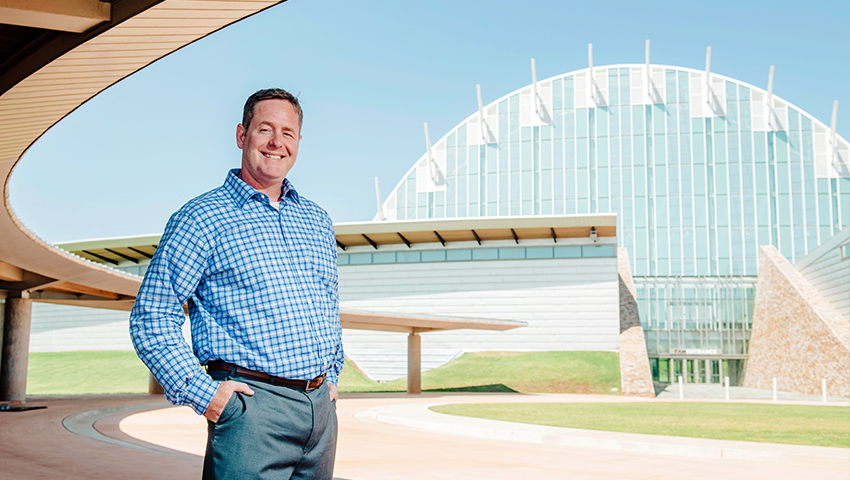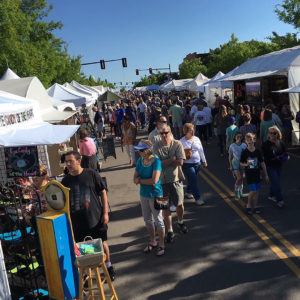Cultural Investment: First Americans Museum

On September 18th, the long-awaited First Americans Museum will open, telling the cultural stories of the 39 native nations in Oklahoma. While this might conjure up the image of a bison or eagle for most people, not Ryan Barnett, the Chief Operations Officer – he’s thinking about the arms of an octopus. For fourteen years, he’s been juggling the complicated budget with a moving variety of funding sources and intertwining agencies. “It’s like wrangling an octopus,” Barnett says, “which is certainly more interesting than doing straight accounting.”
Barnett’s role is to manage the museum’s finances by crunching numbers behind the scenes, which has been vital in helping the museum achieve its two-decade-long goal of opening to the public. “Our Executive Director, James Pepper Henry of the Kaw Nation, has great vision. I like to say he’s the fashion, and I’m the function,” Barnett says with a laugh. “I’m overseeing ticket sales, the gift shop, restaurant, and anything else on the visitor side that generates revenue. It’s more than just a typical business operation, though, because I’m working toward something that will benefit everyone.”
Although Barnett is not Native American himself, he came into the job ready to learn more about Oklahoma’s history, knowing that his childhood education had not provided an adequate picture of the native story. “The museum is telling stories about the people who lived here thousands of years before colonization and statehood,” Barnett said. “It’s about all the tribes, not necessarily a single tribe, because it’s a similar story told from different perspectives – and it can’t be told anywhere else.”
According to Barnett, the museum is a good starting point for someone wanting to learn more. “In some ways, growing up in a state with tribes scattered throughout, maybe we don’t appreciate it as much as a tourist would. When I was a student at Oklahoma Christian University, I did a semester of study in Vienna, just so I could immerse myself in a different culture. Our international tourists will see this museum as an important destination for learning about the culture of the first Americans. This will be their starting point, a hub to help them decide where they want to go next. If someone is intrigued by a particular culture, they can get a taste here and head to that tribal cultural center less than a few hours away in any direction.”
One of the crown jewels of the museum is that the Smithsonian National Museum of the American Indian is loaning important artifacts to Oklahoma long-term. “Each of the 39 tribes selected which items they wanted on display to tell their stories. Many of the pieces belong to the ancestors of these native peoples who still live in Oklahoma today, so that’s a meaningful homecoming,” Barnett said.
“I’m so happy for the museum to open, and I’m excited for everyone to see what I’ve been talking about for so many years. For so long, it’s been an empty space, like the inside of a garage—but now, objects are installed and interpretation is in place. It’s pristine, thoughtful, and quaint. The galleries aren’t huge, but they are impactful, providing an intimate experience. I wholeheartedly believe this museum is a centerpiece for this state, and we’ll be running a tight ship so we can maximize every dollar.”
Visit www.famok.org to learn more or buy tickets to the grand opening.




